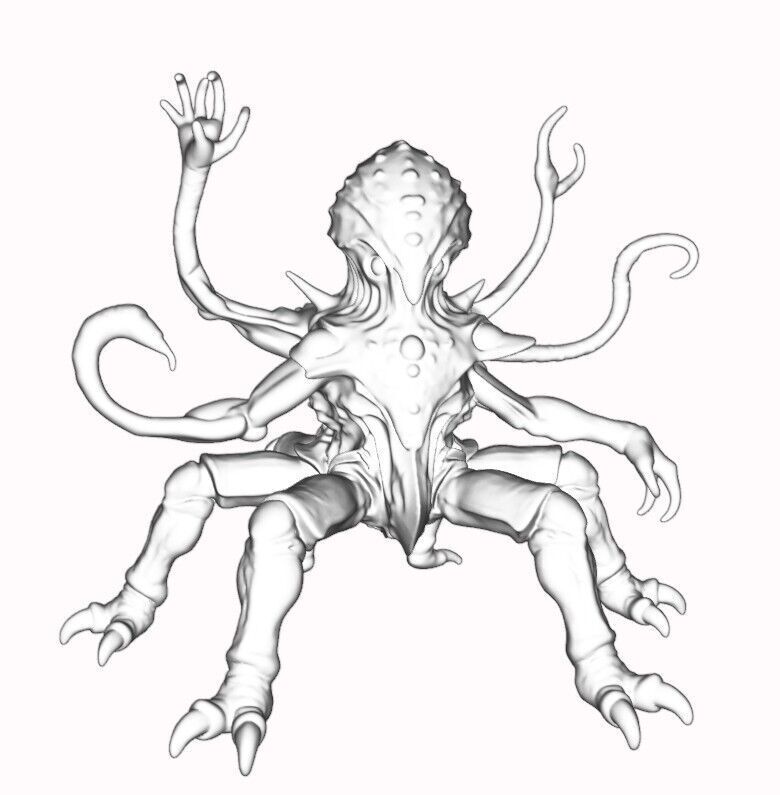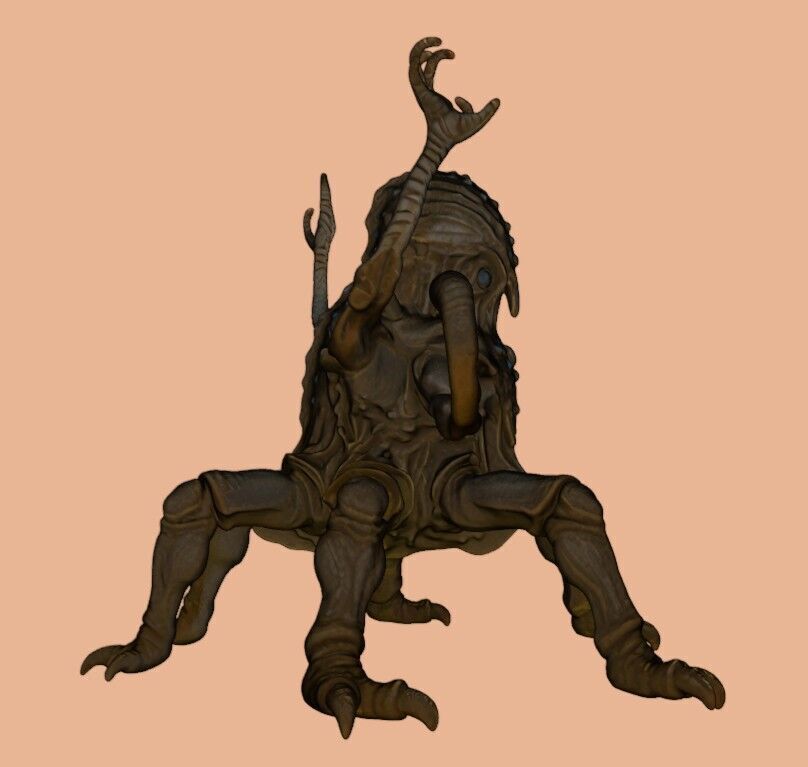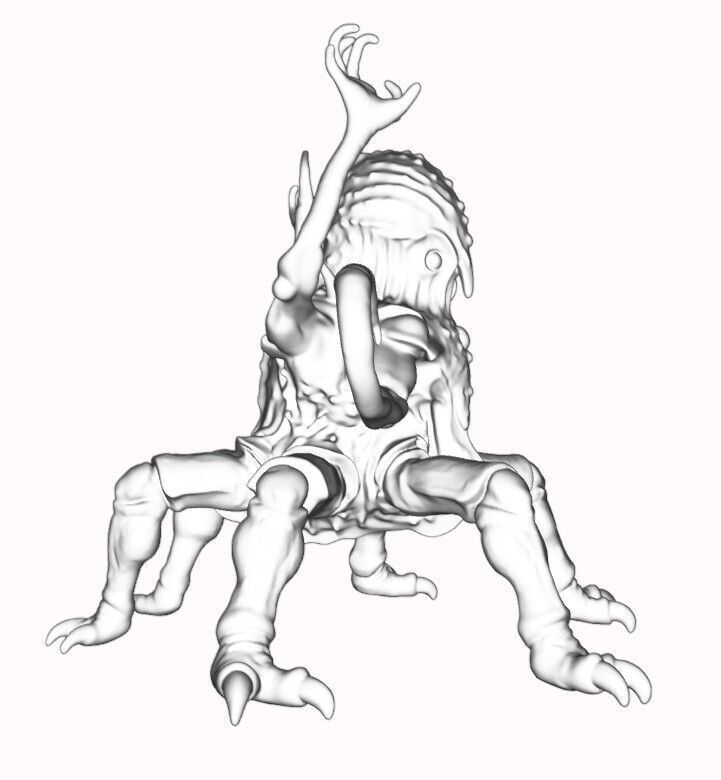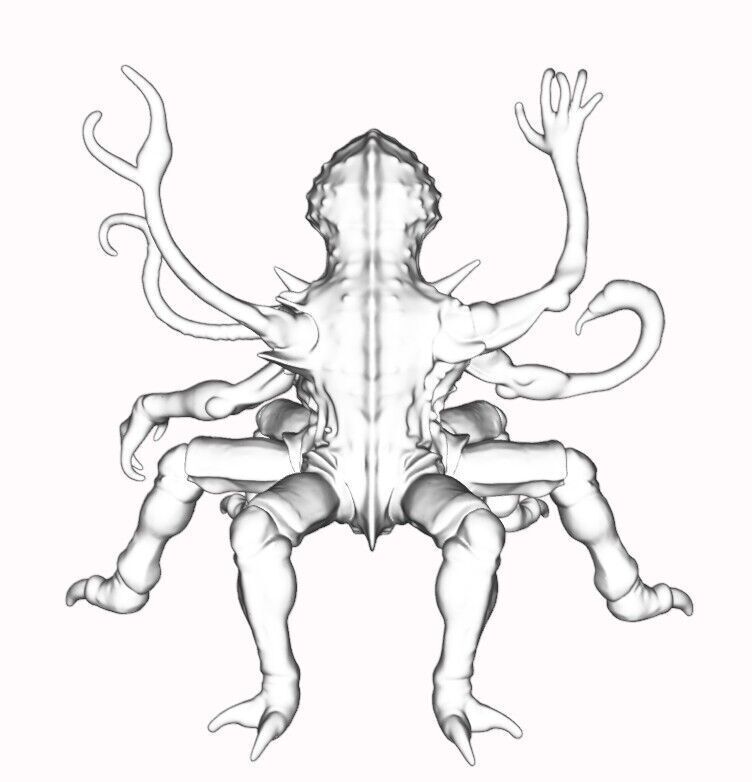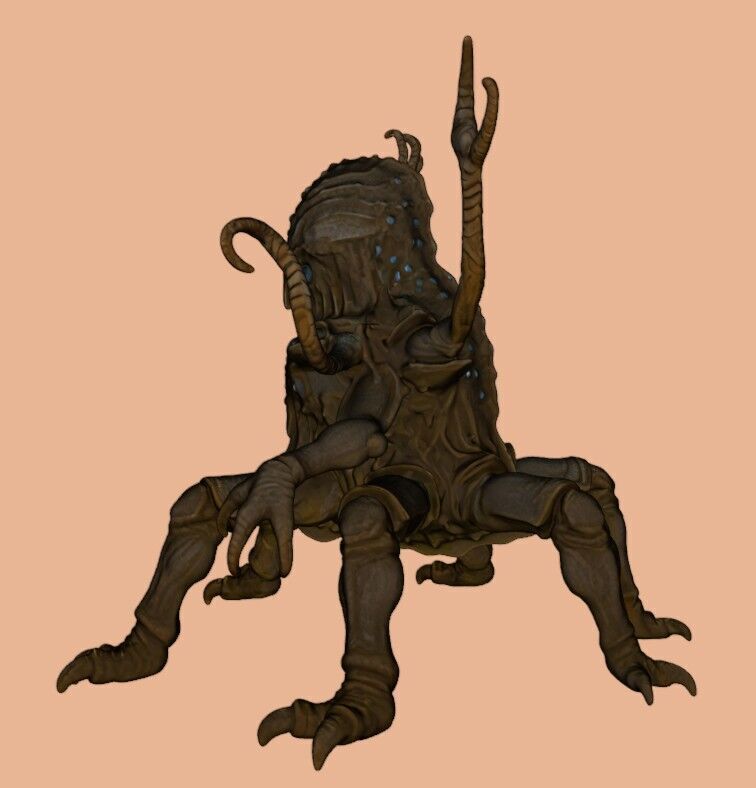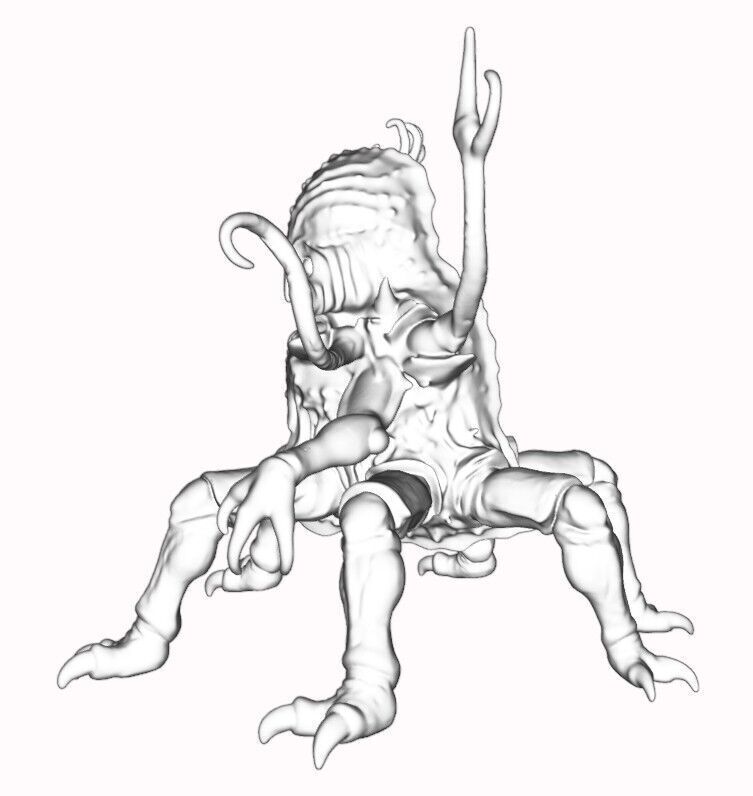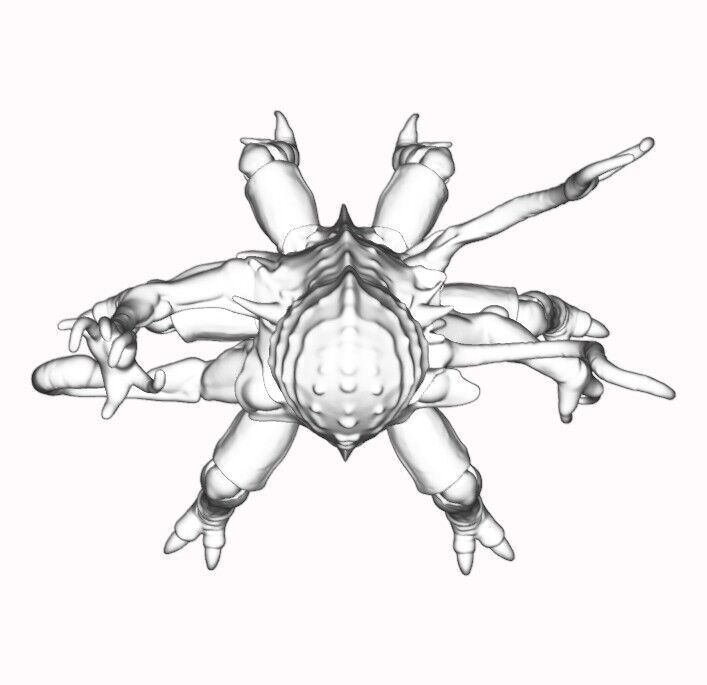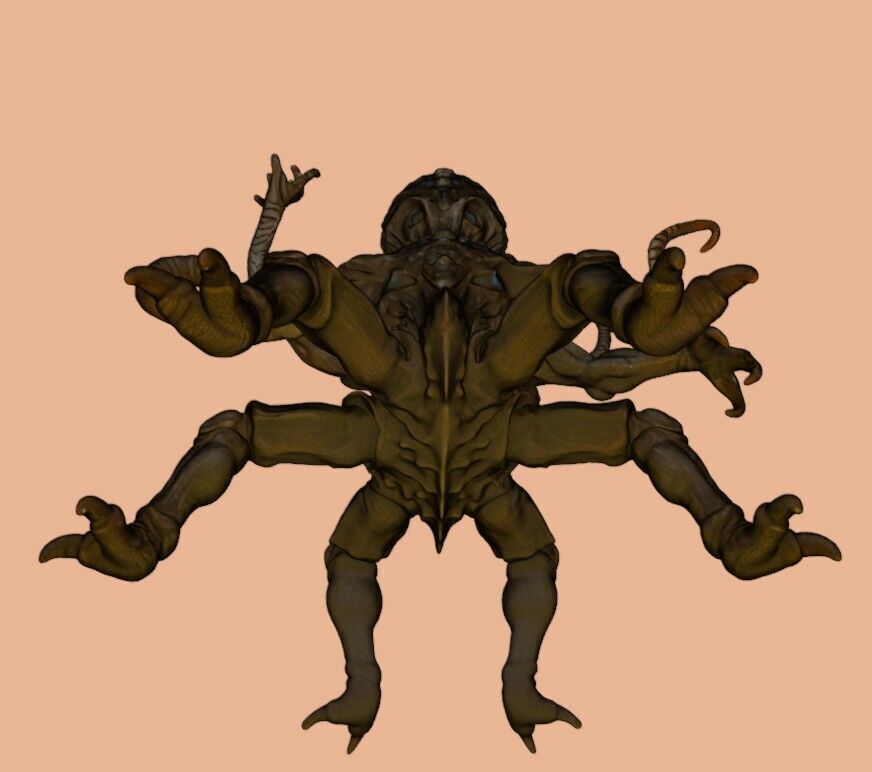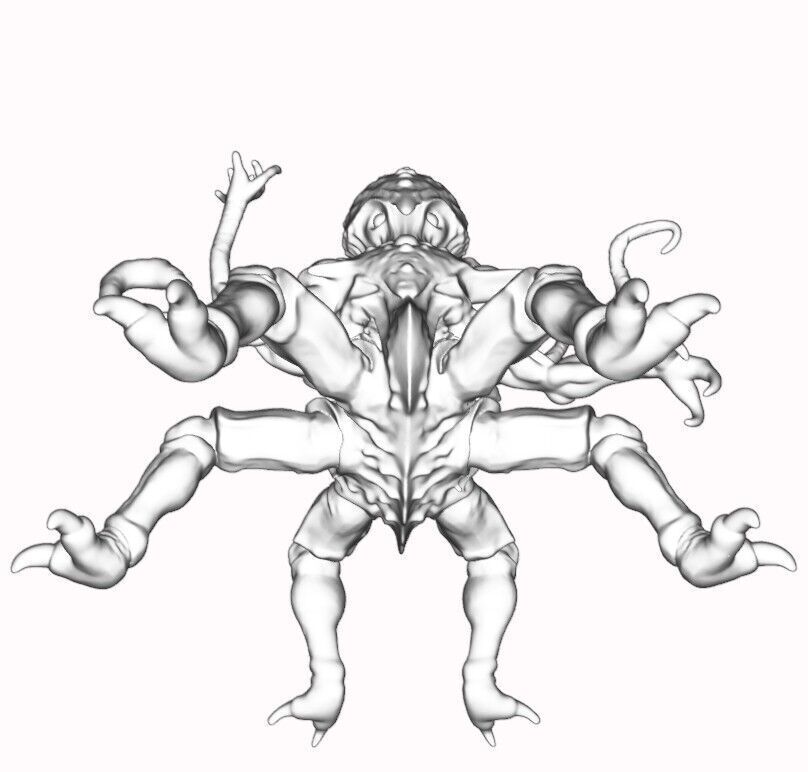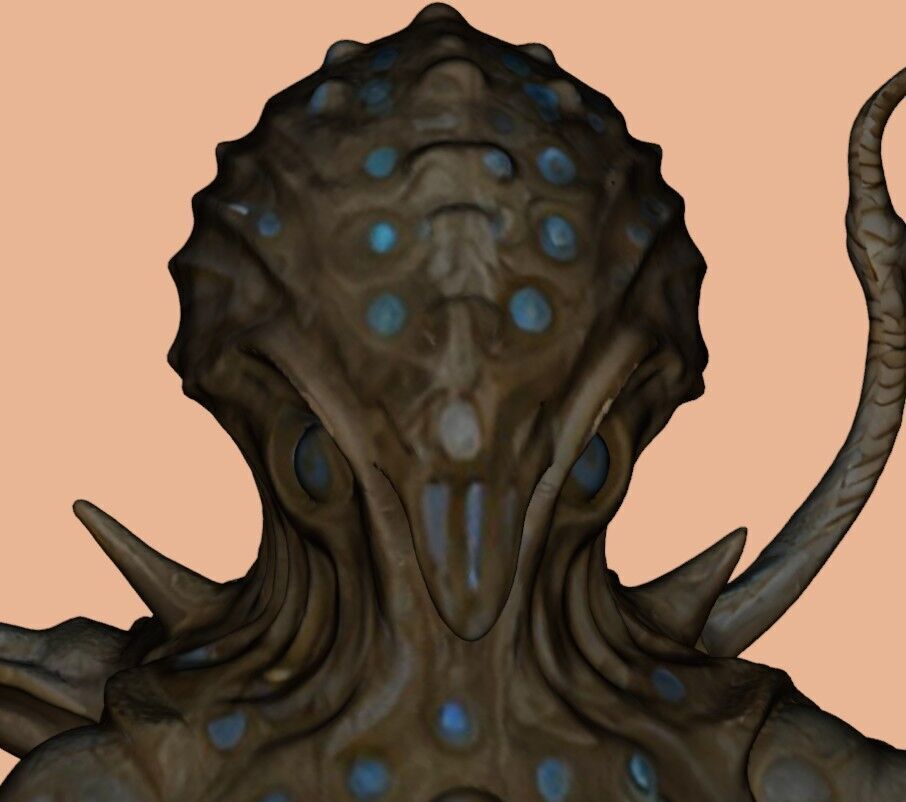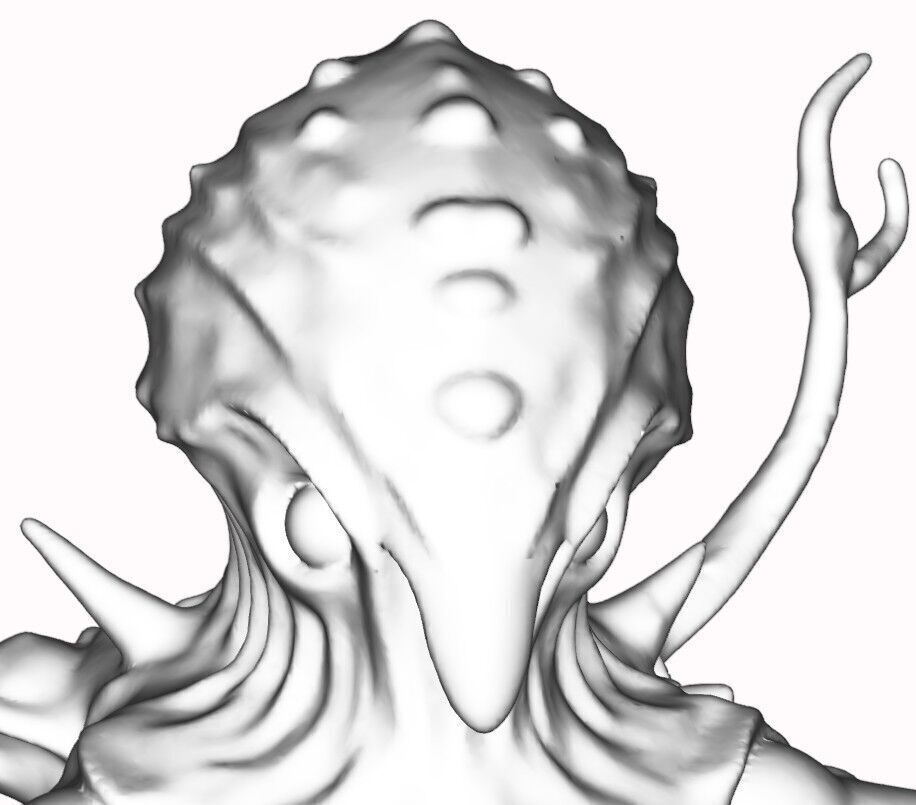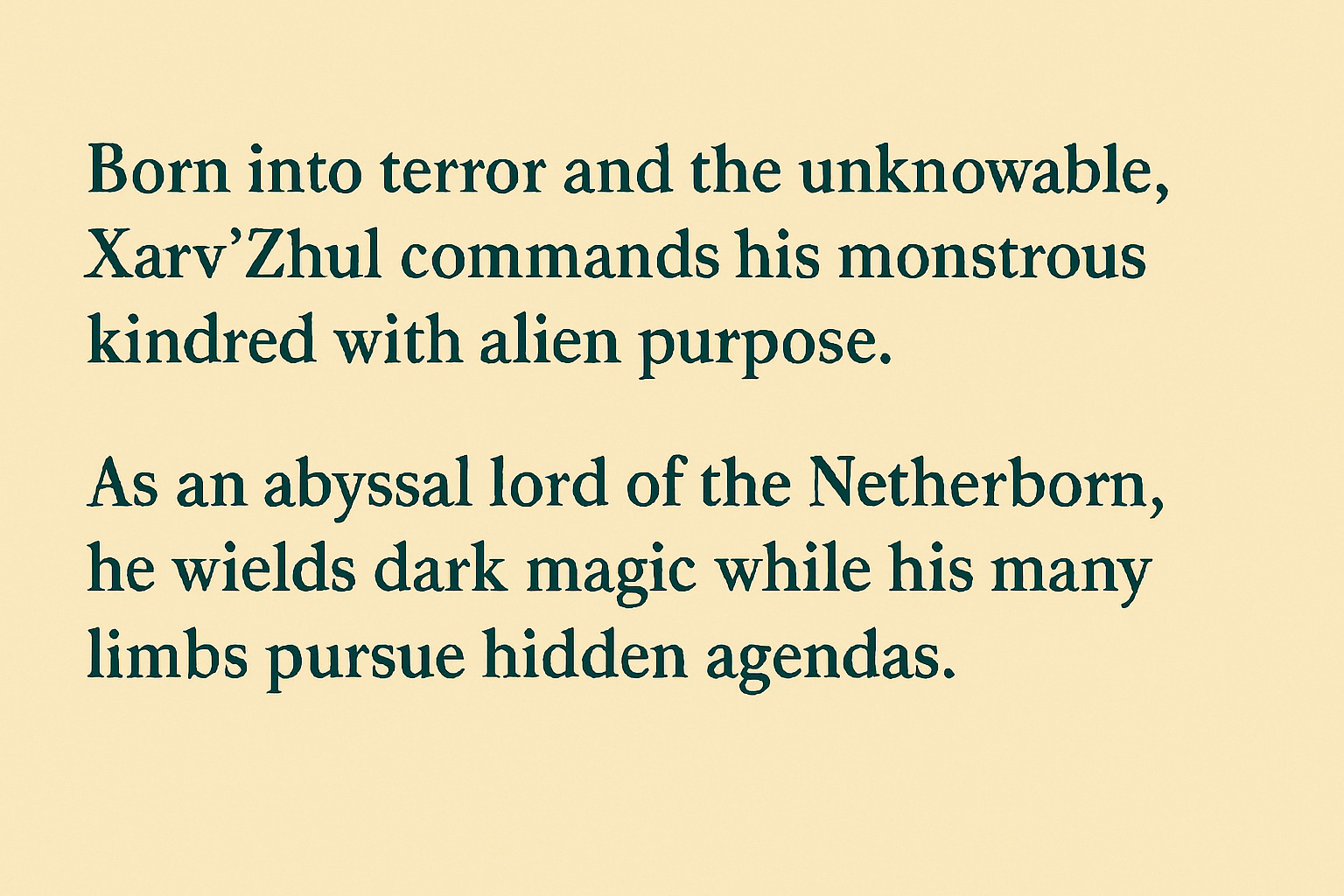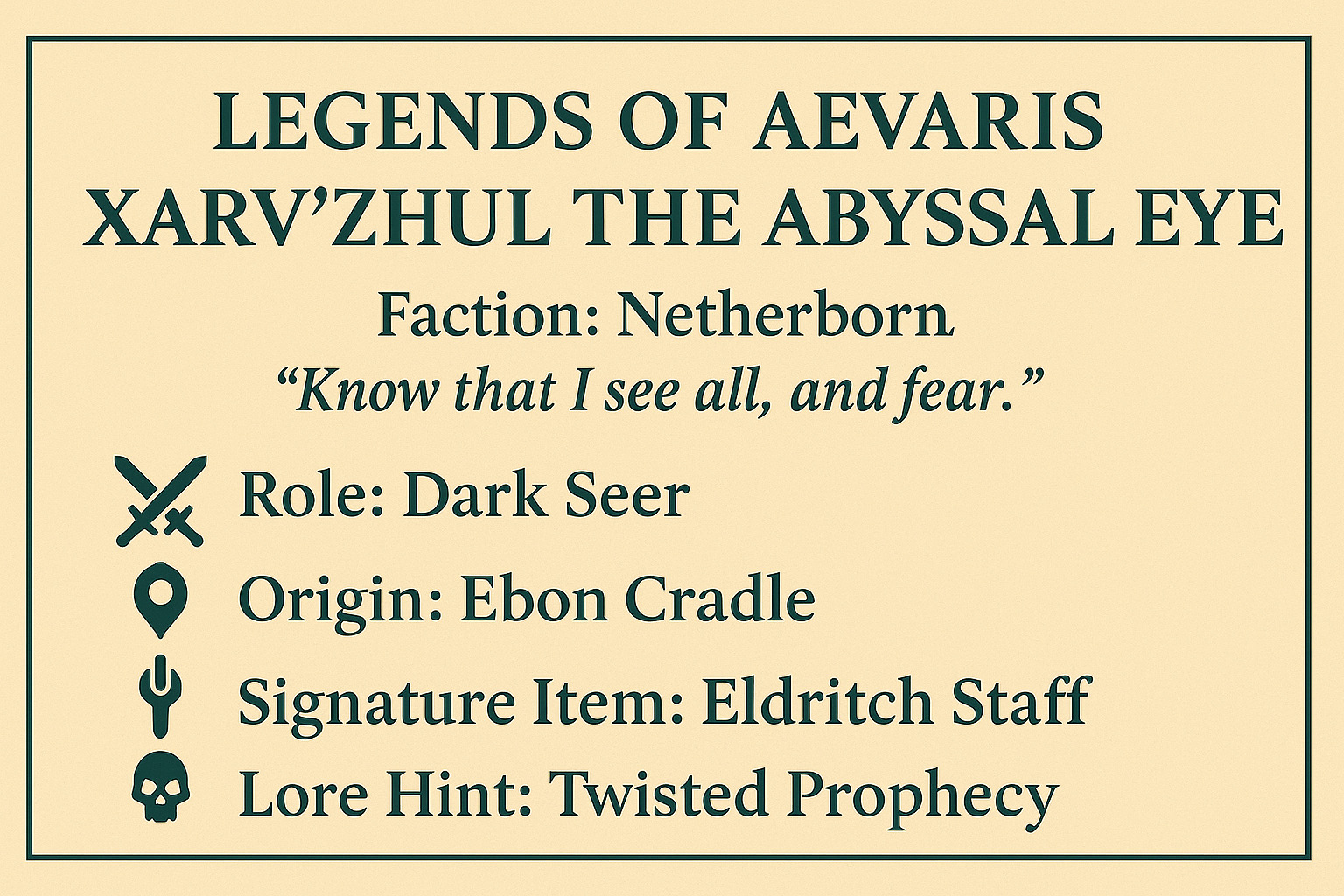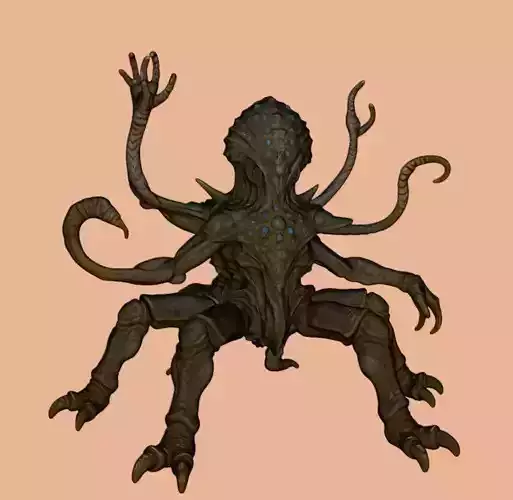
XarvZhul The Thousand-Eyed Herald 3D print model
In the darkest currents beneath Aevaris, where even the gods dare not peer, Xarv'Zhul stirred once more. An ancient seer of the Netherborn, this abyssal horror awakens only when the balance of the Eternal Nexus is threatened by celestial interference. With countless eyes blinking across his chitinous flesh, he gazes into all futures simultaneously—and speaks only the most terrifying truth.
This detailed figurine of Xarv'Zhul captures the alien menace of his form, complete with multi-jointed limbs, clawed talons, and a crown of sensory nodules. Designed for collectors, roleplayers, and narrative-driven tabletop campaigns, the model reflects his psychic prowess and ancient evil. Whether positioned as a final boss, arcane oracle, or a cursed ancient being, Xarv'Zhul brings layered depth and a sense of dread to any scene.
Core Faction:The Netherborn – “Xarv’Zhul once ruled a drowned empire beneath the obsidian tides, his throne carved from the skulls of ancient sea gods. Now, he answers only to the call of the Nexus.”
Included with the digital files are both front and back sides of Xarv’Zhul’s official Legends of Aevaris character card, providing essential story details, factional alignment, and role identity for in-universe tracking and collection.
Please note that the model is primarily designed for textured versions (OBJ + MTL in ZIP archive), allowing for a rich and visually detailed result when used with color-supported 3D printing or digital rendering. The non-textured version (STL, 3MF) may lack some surface details visible in the textured formats.
- Technical Features and Printing Recommendations:
Recommended Size: 100–120 mm total height for best visibility of eye and limb details
Supports Needed: Yes, especially for limbs and raised arms
Recommended Materials: Resin or PLA+ with high-detail nozzle
Estimated Print Time: ~6–9 hours depending on scale
Material Usage Estimate: ~40–55 grams
Included Formats: STL, OBJ, MTL, 3MF, FBX, BLEND – all inside a ZIP archive
Viewer Files: Standalone STL and OBJ versions included for online preview
Scaling Note:This model is designed in millimeters (mm). If it appears too small when imported into your slicer, ensure your software is set to mm units. If needed, scale the model up 100x if the slicer defaults to meters instead.


